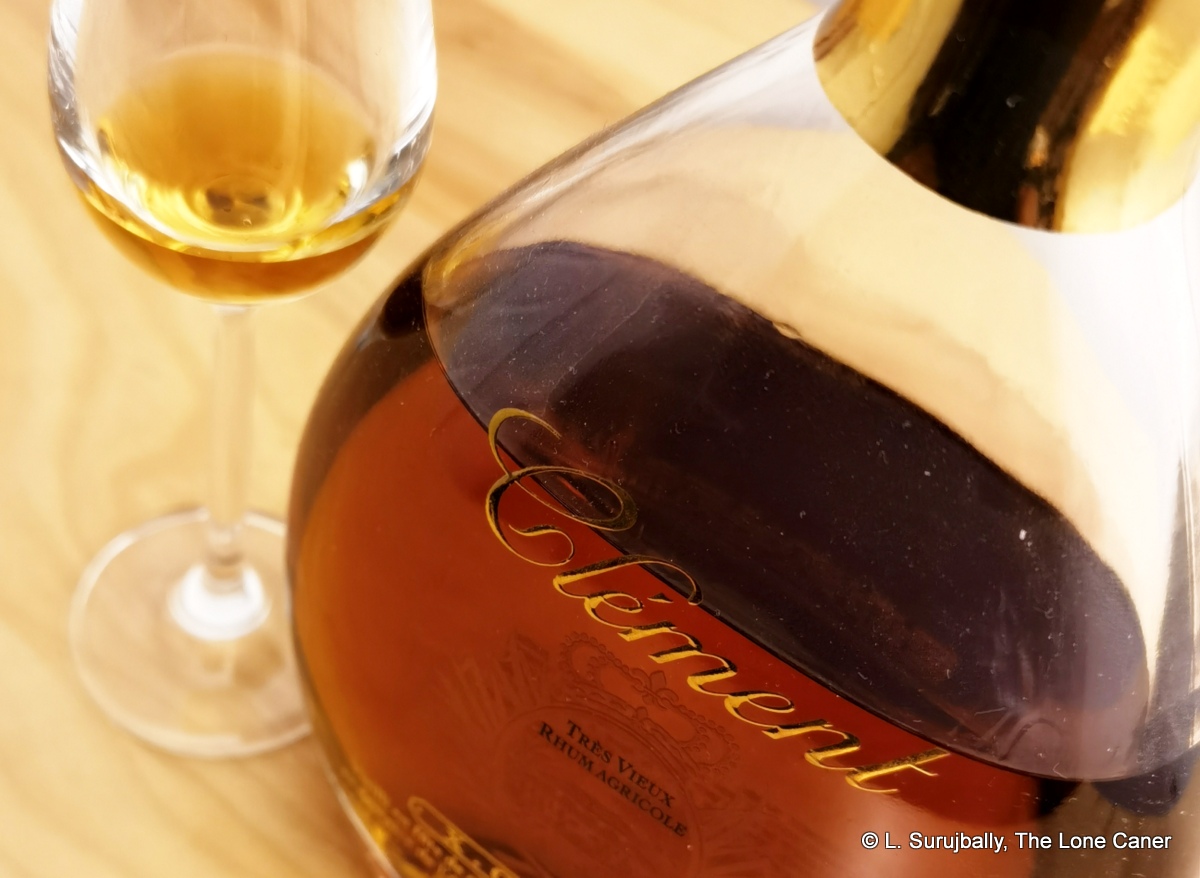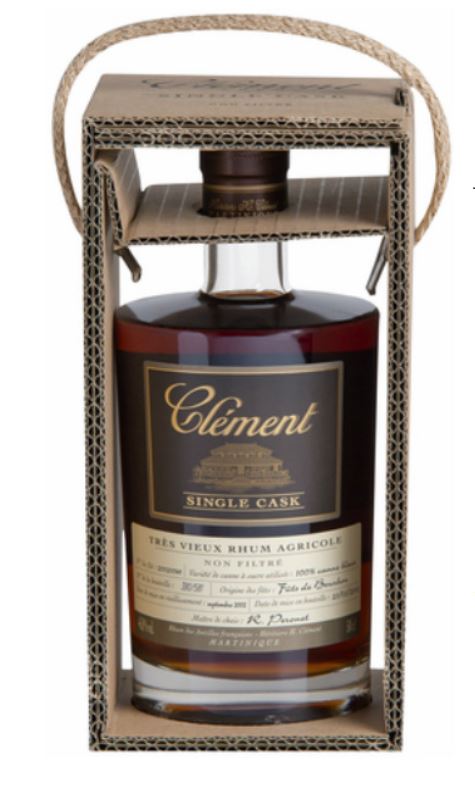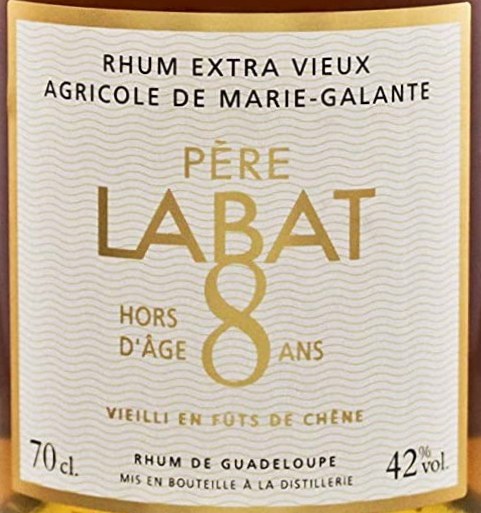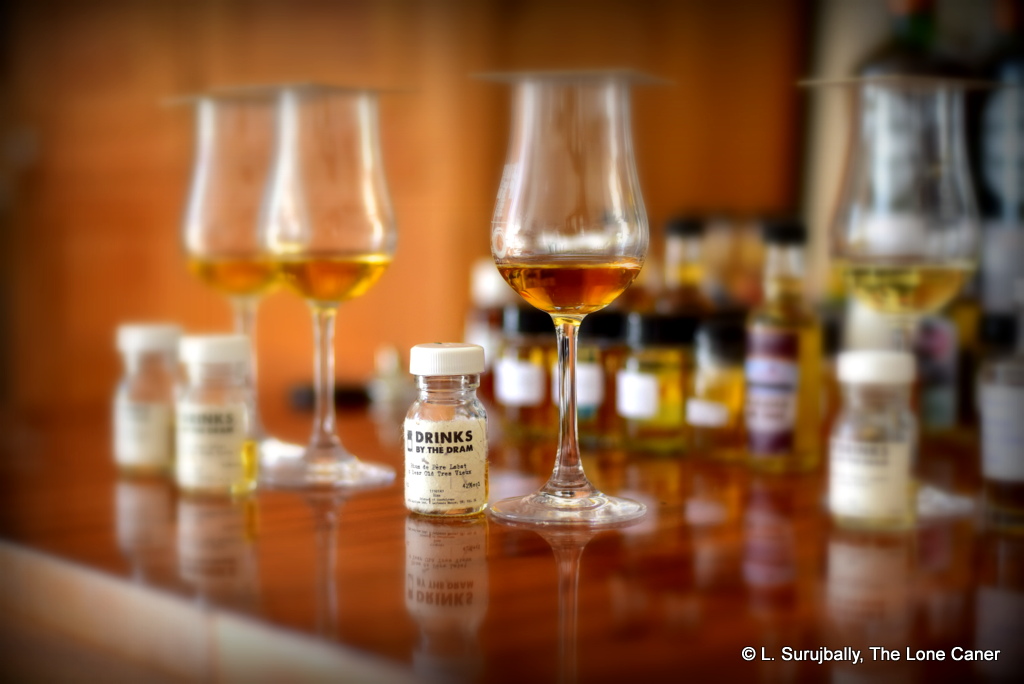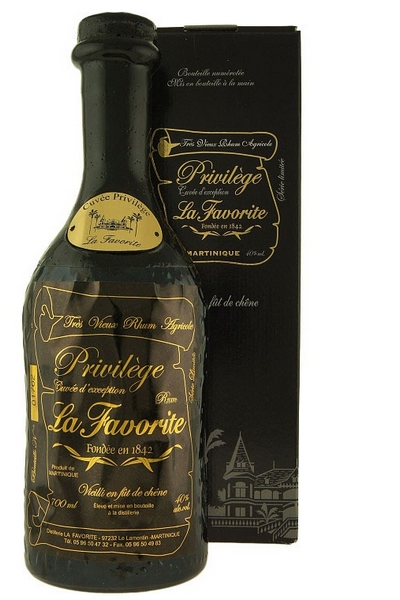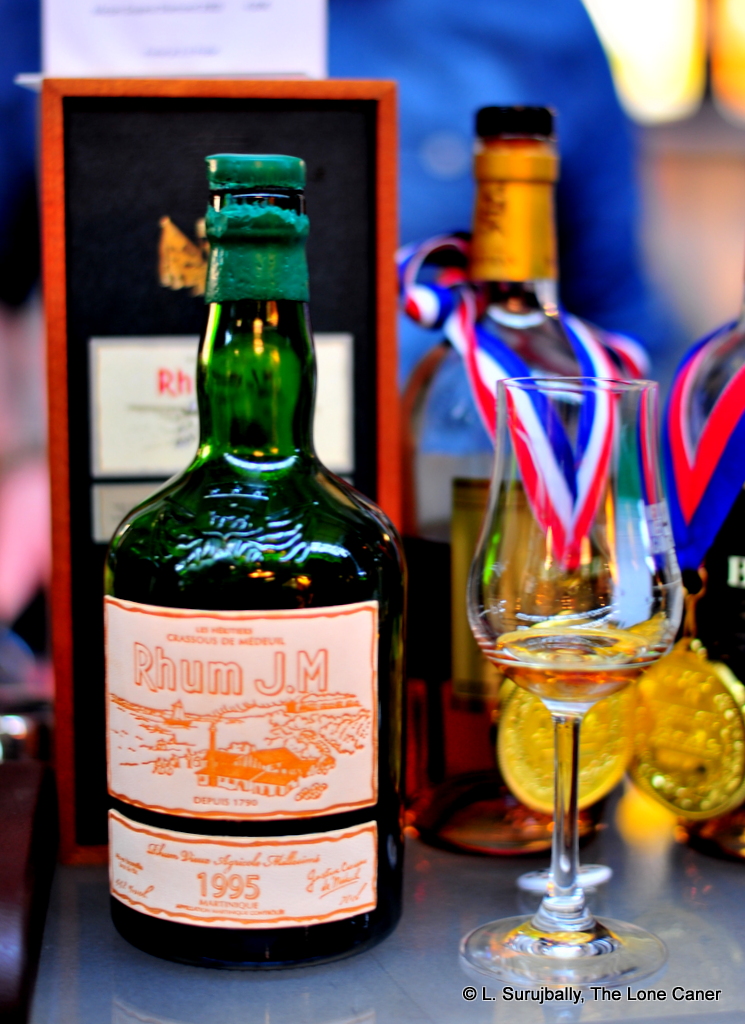
A unique fifteen year old agricole that lacks something of the deep dark depth of the Damoiseau 1980 I so liked, but is a great and tasty example of the style nevertheless…as long as your tastes run that way.
As adolescents, among our most fervent wishes was to have coitus without interruptus the way a hobbit has breakfast: whenever possible, preferably all the time, twice daily if we could manage it (well, what teenager hasn’t?) But as the years wound on, some reality entered that little fantasy: the truth is that unlimited anything gets boring after a while. One does not wish to eat manna from heaven every single day, do the same job day in and day out, indulge in neverending bedroom calisthenics…or drink the same kind of rum all the time.
I relate this (possibly apocryphal) story to link to another conversation a fellow reviewer and I had not too long ago: that agricoles just weren’t his thing, and remain an acquired taste enveloped in a certain subtle snobbery for those who preferred them. I understand this perspective, since agricoles as a whole are quite different from molasses based rums that reek of caramel, licorice, fruits, toffee and what have you. And while I don’t care for the term “acquired taste” – this is where the imputed elitism has its source – the fact is that the gent was right: tastes do evolve: rums which are current favourites may lose their place in the sun, to be replaced by others you would have never dreamed of touching when you were just starting out. Rhums are seen by their adherents to possess remarkable quality in their own right, no matter how much the taste profile bends away at right angles from what others have come to accept as more common (or better).
Anyway, remembering the wonderful experience I had with the Damoiseau 1980, when I saw a bottle of the JM 1995 Rhum Tres Vieux 15 year old (which nowadays retails in the €200 range), I dived right in. And believe me, when I say it’s different, those of you who prefer more traditional fare can take that as the absolute truth. It’s not for everyone necessarily, but for those whose palates bend in that direction, it’s quite a drink.
As is proper for a top-of-the-line aged product, the green bottle, sealed with wax and possessing a cool leather embossed label came in a fine wooden box that showcased its antecedents, its AOC designation – which means it adhered to stringent manufacturing guidelines such as how soon after reaping the source cane had to be distilled, additions, filtration, etc – and its age. Now strictly speaking, this is a millésime, but it is noted as being a très vieux (very old)…it could just as easily be termed an XO, but I’m not a purist on the matter and will let it pass with just that comment.
The single-column copper-still rhum was a honey gold colour with coppery hints, and gave promise of a medium-light body, which the nose certainly confirmed. It gave forth immediate scents of freshly mown grass and crushed sugar cane, slightly sweet…and quite dry, though not enough to wrinkle the nose. There were notes of toffee, salty peanut brittle, bon-bons, even a slightly sweetish bubble-gum background which balanced off the brininess. The 44.8% strength was just about right, I think, otherwise we might have really been struck with a dry desert wind on this one.
Still, I liked it, and as the taste developed, saw no real reason to change my opinion. The palate was smooth and warm, where all the harmonies of the nose developed to a fuller expression – flowers, rain-wet grass, sugar cane rind stripped with the teeth, a flirt of tangerine rind, and biscuits with dry cheese — a liquid warm croissant with a dab of rich, freshly churned butter — all underlain with a sweetish vanilla background, and almost no oak tannins at all. None of the individual components predominated over any other – the balance was really quite something. What also surprised me was the faint anise taste that revealed itself after a few minutes and melded well into the overall whole. The finish was short to medium and reminded me a lot of the Clemente XO: both had that closing aroma of smouldering cane fields and vanillas that to this day evoke so many memories.
Situated in the north of Martinique in Bellevue, J.M. began life with Pére Labat, who was credited with commercializing and proliferating the sugar industry in the French West Indies during the 18th century. He operated a sugar refinery at his property on the Roche Rover, and sold the estate to Antoine Leroux-Préville in 1790 – it was then renamed Habitation Fonds-Préville. In 1845, his daughters sold the property again, this time to a merchant from Saint-Pierre names Jean-Marie Martin. With the decline in sugar production but with the concomitant rise in sales of distilled spirits, Jean-Marie recognized an opportunity, and built a small distillery on the estate, and switched the focus away from sugar and towards rum, which he aged in oak barrels branded with his initials “JM”. In 1914 Gustave Crassous de Médeuil bought the plantation from his brother Ernest (I was unable to establish whether Ernest was a descendant or relative of Jean-Marie), and merged it with his already existing estate of Maison Bellevue. The resulting company has been family owned, and making rhum, ever since and is among the last of the independent single domaine plantations on Martinique.
If I had fault to find at all in the rhum, it was its aridity, which subtly spoiled (for me) the smoothness of the overall experience, and is another reason I appreciated its relatively lower proof. Though my sample set of agricoles is too small to make the claim with assurance, it may also speak to my palate being adulterated by rums that have added inclusions (like sugar) to smoothen out such a profile, a practice eschewed by AOC agricoles. Still, summing up, this is a rhum I’ll have to come back to, in the years to come, and will probably rise in my estimation much as the Clemente did. The J.M. 1995 is the kind of rum I’ve been pestered about for ages. People couldn’t quite describe it, but they said I had to sample it, and review it. I just had to.
Well, I did. They were right. It’s quite a lovely drinking experience
(#205. 86/100)
Opinion
Many French West Indian distilleries adhere to a certain puritan strain of rhum production (whether or not they apply for AOC rating). They use cane juice, don’t add anything to their rhums to either colour them or adulterate them, often issue them at cask strength, and sniffily refer to molasses based rums with the somewhat disdainful moniker of “industrials”. They may have a point – if there had ever been a pure ethos of rum making, shorn of all the modern and technical innovations, surely it is the agricoles which represent its continuance in modern times. They are a miniscule part of the rum world by volume of sales, yet they hang in there, producing these uniquely tasting, offbeat rums, seen by their tasting champions as exemplars of the craft the way it is, and was, meant to be.
I don’t really agree with that concept 100%, since it is in the nature of mankind to move forward and evolve…and to stick with “the way things were” forever strikes me as unreasoning, almost fanatical, adherence to a single tradition or ideology. But there’s no doubt that JM, with rhums like this one, are probably on to something, and to tamper with the philosophy of how it’s made would be to discard a link with rum’s past, lose the variety that makes rum great, and leave us poorer for it.
So while not all aspects of the JM 1995 find favour with me (all apologies to the cognoscenti who feel the opposite is true), I acknowledge its distinctiveness and remarkable profile — and if I don’t entirely fall under its beguiling spell, I don’t hate it either, and maybe it’s all just a case of me still acquiring the taste.
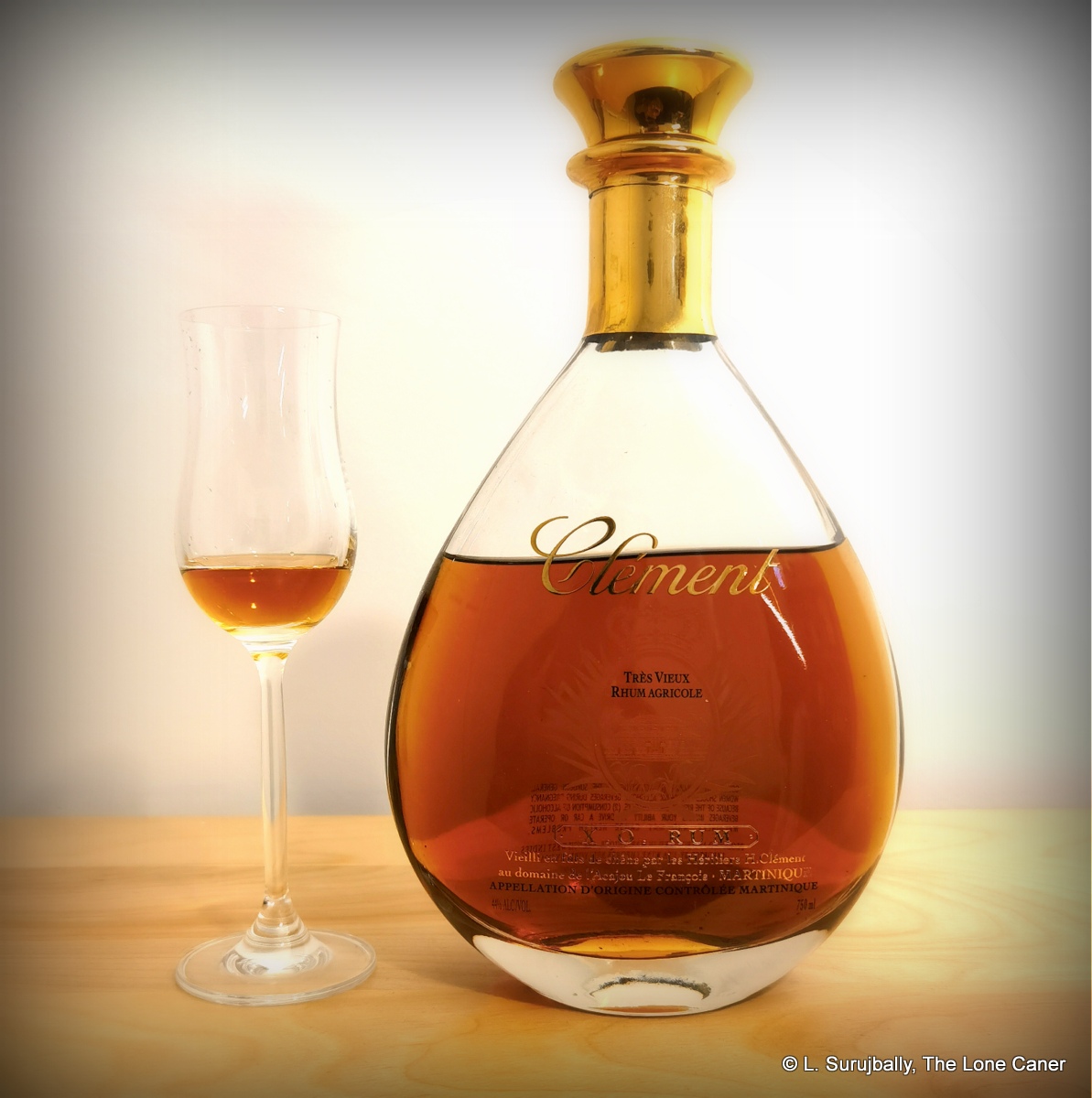 What this is is one of the first of the premium blends the company put out and is a marriage of what they felt was three exceptional years’ production: 1952, 1970 and 1976, which were also released as individual millesime bottlings. It’s unclear those individual releases were issued before or after this blended XO (I only managed to acquire samples of each many years later). But since the 1952 component has now run out, the specific blend comprising the XO is now defunct and while the company uses the same sleek bottle for other XO rhums, the label is subtly different for each, denoting a different product.
What this is is one of the first of the premium blends the company put out and is a marriage of what they felt was three exceptional years’ production: 1952, 1970 and 1976, which were also released as individual millesime bottlings. It’s unclear those individual releases were issued before or after this blended XO (I only managed to acquire samples of each many years later). But since the 1952 component has now run out, the specific blend comprising the XO is now defunct and while the company uses the same sleek bottle for other XO rhums, the label is subtly different for each, denoting a different product. Palate – There’s a smoky, dry. leathery tang of an old port to the initial tastes, but it comes over nicely because of the heft and solidity n the tongue – the mouthfeel is really quite good. Apples, apricots, hard yellow mangoes on the edge of going soft, and raisins and red wine. To be honest, after years of acclimatising myself to rums at 60% ABV or greater, the XO here no longer demonstrates sharpness (as I commented in my original review) but crisp solidity, even a touch of softness.
Palate – There’s a smoky, dry. leathery tang of an old port to the initial tastes, but it comes over nicely because of the heft and solidity n the tongue – the mouthfeel is really quite good. Apples, apricots, hard yellow mangoes on the edge of going soft, and raisins and red wine. To be honest, after years of acclimatising myself to rums at 60% ABV or greater, the XO here no longer demonstrates sharpness (as I commented in my original review) but crisp solidity, even a touch of softness.